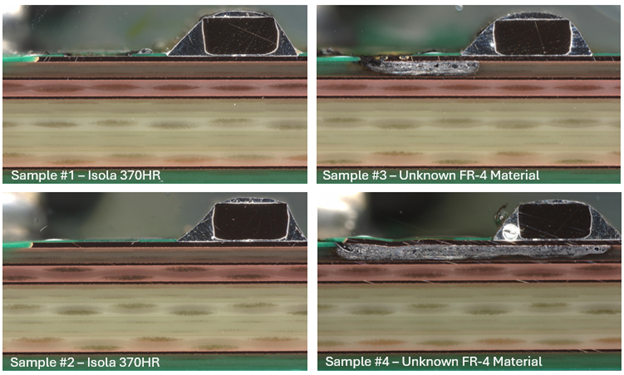Why Material Selection Matters: Ensuring Quality, Performance, and Reliability in Manufacturing
When it comes to manufacturing high-quality products, material selection is one of the most important decisions you can make. While it may seem like a minor detail, the choice of materials significantly impacts a product’s lifespan, durability, and functionality. Not all materials are created equal, and some can lead to critical failures if they don’t meet the necessary specifications. In this post, we’ll explore why material quality is essential, share a real-world example, and highlight how using the right materials leads to more consistent, reliable outcomes.
The Importance of Material Quality
Selecting the right materials goes far beyond simply cutting costs or choosing what’s most readily available. Some designers may assume that using a generic material will reduce expenses or avoid potential supply delays, but this approach can often lead to greater costs in the long run. High-quality, specified materials are essential for ensuring that products meet stringent standards, perform consistently, and fulfill their intended lifespan and functionality. When materials don’t meet necessary specifications, products are at greater risk of reduced durability, performance, or even failures, ultimately impacting both product quality and customer trust.
When considering materials, it’s important to choose proven, reliable options. Specifying high-quality materials from trusted suppliers is one of the most effective ways to ensure quality control and consistency in the manufacturing process.
Real-World Example: How Material Choice Affects Product Performance
Here’s an example of how critical material selection can be in practice. Recently, a customer’s design was built by two different fabricators. One fabricator followed the material specifications and used Isola 370HR, known for its reliability and ability to deliver consistent, high-level performance. The other fabricator used a general “FR-4” material instead, which was lower in quality and not specifically suited to the design’s requirements.
The results were striking: the boards made with Isola 370HR performed as intended, meeting quality standards and maintaining functionality. In contrast, the boards made with the generic FR-4 material suffered from performance issues, leading to failures that required a complete remake. This example clearly demonstrates that a compromise in material quality can result in significant issues, costing both time and resources.

Performance Outcomes: Risks of Using Non-Specified Materials
Choosing non-specified or lower-quality materials can introduce various performance issues, including early wear and compromised electrical performance. In our example, the FR-4 material was not able to provide the same reliability as the Isola 370HR. Issues included failures in electrical integrity and durability, both of which could have been avoided with the specified material. These kinds of failures emphasize the importance of using high-quality materials from the beginning to avoid costly remakes, returns, and dissatisfied customers.
The Benefits of Quality Control and Consistency
Working with high-quality, specified materials ensures more than just basic functionality. Trusted materials lead to consistency across production runs, provide a predictable and controlled manufacturing process, and reduce the risk of defects or failures down the line. When material selection is part of the planning process, we can better guarantee the product’s durability and performance, ultimately leading to fewer returns, fewer repairs, and a better experience for the end customer.
Let’s Talk About Your Next Project
If you’re starting a new project or considering improvements to an existing one, we’d love to discuss the material options that will help you achieve the best results. Specifying the right materials can make a real difference in quality, reliability, and efficiency, ultimately saving time and resources. Reach out to us to learn more about how we can support your project with the materials it needs.
by Laura Martin, Director of Strategic Markets
18 December 2024


